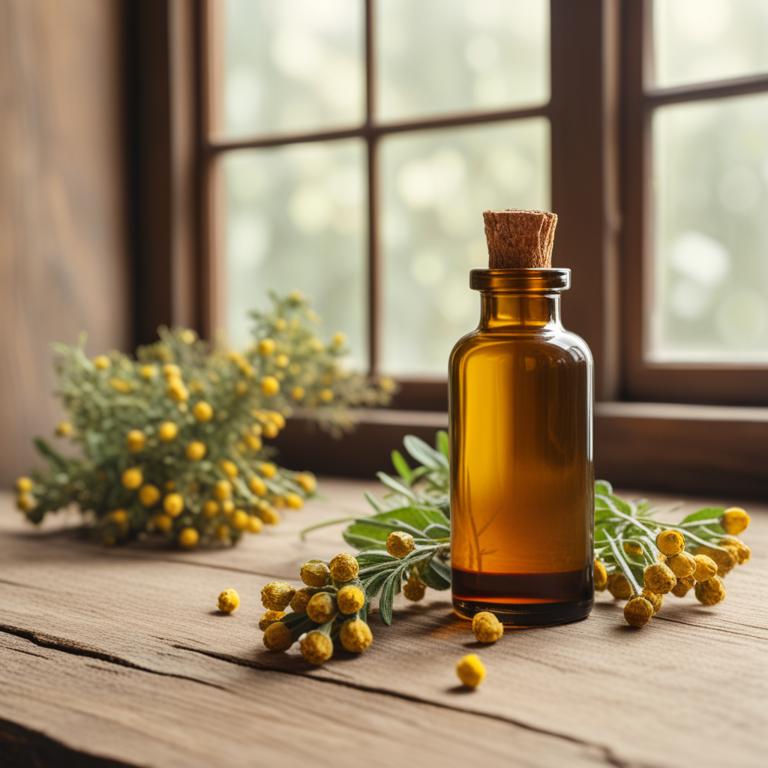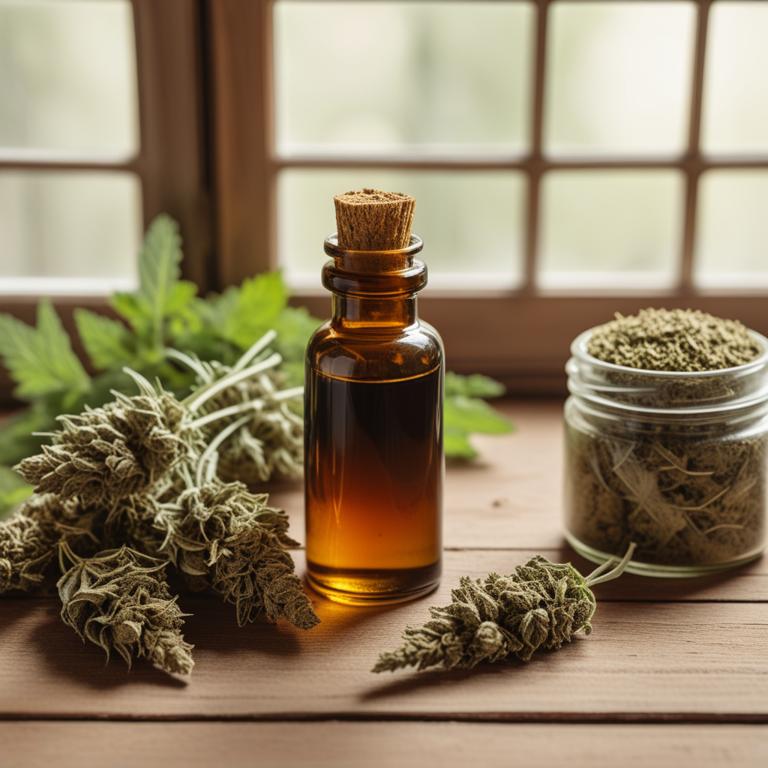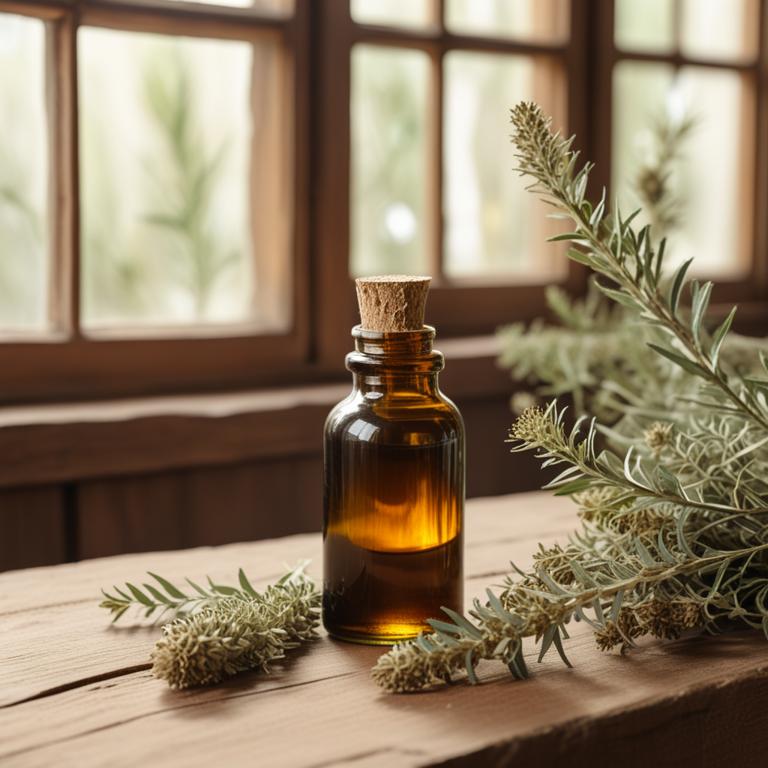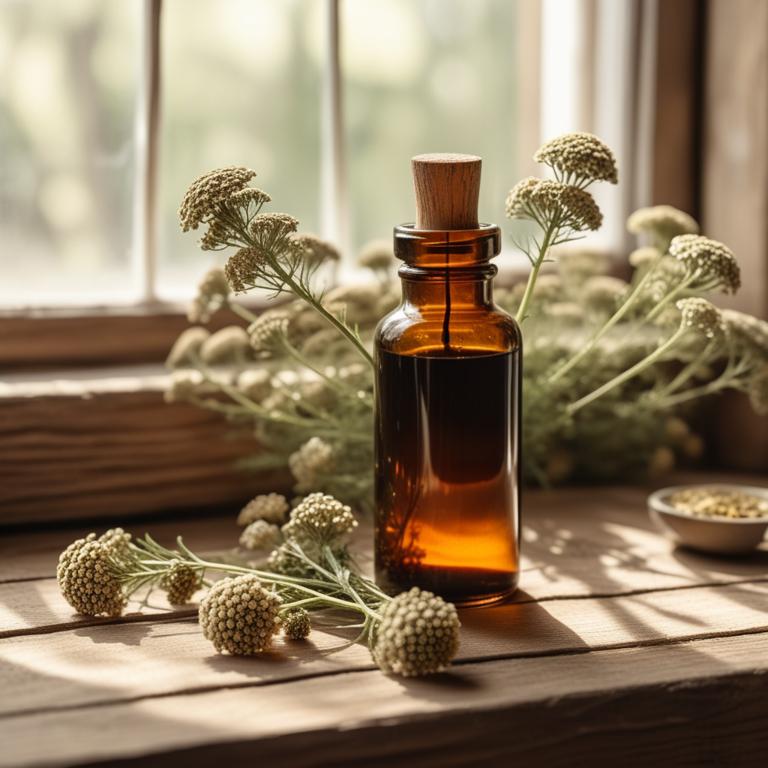7 Best Herbal Tinctures For Boils

Herbal tinctures for Boils are liquid extracts made from plants that have antimicrobial and anti-inflammatory properties, used to treat skin infections and abscesses caused by boils.
These tinctures offer numerous benefits, including reduced inflammation, accelerated healing, and prevention of scarring, making them a popular natural remedy for this ailment.
Examples of herbal tinctures used to treat boils include Tea Tree Oil tincture, which is known for its antibacterial properties, Calendula tincture, which aids in wound healing and skin regeneration, Echinacea tincture, which boosts the immune system, and Goldenseal tincture, which has anti-inflammatory properties that help reduce swelling and pain.
By incorporating these herbal tinctures into a treatment plan, individuals can alleviate the symptoms of boils and promote a faster recovery.
According to "Forschende Komplementarmedizin und klassische Naturheilkunde = Research in complementary and natural classical medicine", tinctures for boils, specifically the ethanolic PADMA 28 tinctures, were found to exhibit an improved inhibitory effect on Gram-positive bacteria, which may be beneficial in treating boils caused by bacterial infections.
Below there's a list of the 7 best herbal tinctures for boils.
- 1. Teucrium chamaedrys tinctures
- 2. Urtica dioica tinctures
- 3. Echinacea purpurea tinctures
- 4. Aloe barbadensis tinctures
- 5. Melaleuca alternifolia tinctures
- 6. Calendula officinalis tinctures
- 7. Achillea millefolium tinctures
Also you may be interested in...
TODAY'S FREE BOUNDLE
Herb Drying Checklist + Herbal Tea Shopping List + Medicinal Herbs Flashcards
Enter you best email address below to receive this bundle (3 product valued $19.95) for FREE + exclusive access to The Aphotecary Letter.
$19.95 -> $0.00
1. Teucrium chamaedrys tinctures

Teucrium chamaedrys tinctures have been traditionally used to treat boils, a skin infection characterized by painful and pus-filled bumps.
The antiseptic and anti-inflammatory properties of this herbal preparation help to reduce the severity of boils by preventing bacterial growth and soothing the affected skin.
The bioactive constituents of Teucrium chamaedrys, including flavonoids and phenolic acids, exhibit antimicrobial and antioxidant activities that contribute to its therapeutic effects.
The benefits of using Teucrium chamaedrys tinctures to treat boils include reduced inflammation, faster healing, and a lower risk of scarring.
2. Urtica dioica tinctures

Urtica dioica tinctures, derived from the leaves of the stinging nettle plant, have been used to treat boils due to their anti-inflammatory and antimicrobial properties.
The tannins, flavonoids, and saponins present in this herbal preparation help to reduce inflammation and prevent infection, thereby promoting the healing of boils.
By inhibiting the growth of bacteria and reducing inflammation, Urtica dioica tinctures aid in the resolution of boils, providing relief from pain and discomfort.
The benefits of using this herbal preparation to treat boils include reduced scarring, faster healing times, and a lower risk of recurrence.
3. Echinacea purpurea tinctures

Echinacea purpurea tinctures have been traditionally used to treat boils, a skin infection caused by bacterial or staphylococcal infections.
The anti-inflammatory and antimicrobial properties of this herbal preparation help to reduce the severity and duration of boils, by inhibiting the growth of bacteria and promoting wound healing.
The bioactive constituents of Echinacea purpurea, such as alkylamides and caffeic acid derivatives, have been shown to exhibit immunomodulatory and antimicrobial effects, which help to combat the infection and promote recovery.
The benefits of using Echinacea purpurea tinctures to treat boils include reduced inflammation, faster healing, and a lower risk of scarring, making it a popular natural remedy for this common skin condition.
4. Aloe barbadensis tinctures

Aloe barbadensis tinctures have been used to treat boils, a skin infection characterized by painful, pus-filled lesions.
The anti-inflammatory properties of Aloe barbadensis tinctures help to reduce swelling and ease pain associated with boils, while its antimicrobial properties combat the underlying bacterial infection.
The bioactive constituents of Aloe barbadensis tinctures, including aloin, aloe-emodin, and acemannan, contribute to its ability to heal and soothe the skin, reducing the risk of scarring and promoting faster recovery.
By using Aloe barbadensis tinctures, individuals can benefit from a natural and effective treatment for boils that reduces the risk of complications and promotes overall skin health.
5. Melaleuca alternifolia tinctures

Melaleuca alternifolia tinctures have been traditionally used to treat boils due to their antibacterial and anti-inflammatory properties, which help to reduce the severity and duration of the infection.
The tannins and phenolic compounds present in the tincture inhibit the growth of bacteria, such as Staphylococcus aureus, that cause boils.
By reducing inflammation and fighting off the infection, Melaleuca alternifolia tinctures help to promote healing and prevent scarring.
The benefits of using this herbal preparation to treat boils include reduced pain, swelling, and the risk of further complications, making it a natural and effective remedy for this common skin condition.
Related Study
According to "Adverse drug reactions and toxicological reviews", Melaleuca alternifolia tinctures for boils have antifungal, antiviral, antibacterial and acaricidal activity against skin infections.
6. Calendula officinalis tinctures

Calendula officinalis tinctures have been traditionally used to treat boils due to their anti-inflammatory, antiseptic, and antimicrobial properties, which help to reduce swelling, prevent infection, and promote wound healing.
The bioactive constituents of Calendula officinalis, including triterpene saponins and carotenoids, possess potent antimicrobial activity that helps to combat bacterial and fungal infections associated with boils.
By applying Calendula officinalis tinctures topically, individuals can experience reduced pain, inflammation, and pus formation, ultimately leading to faster healing and reduced scarring.
The benefits of using Calendula officinalis tinctures to treat boils include reduced risk of infection, accelerated healing, and a decrease in the severity and duration of symptoms.
Related Study
According to "BMC veterinary research", Calendula officinalis tinctures may be beneficial in treating boils due to its broad-spectrum antibacterial and antifungal effects, including those against antibiotic-resistant bacteria.
7. Achillea millefolium tinctures

Achillea millefolium tinctures have been traditionally used to treat boils due to their anti-inflammatory and antibacterial properties.
The tannins and flavonoids present in the tincture help to reduce inflammation and fight off bacterial infections that cause boils.
By reducing redness and swelling, Achillea millefolium tinctures assist in healing the affected area and preventing further infection.
The bioactive constituents, such as sesquiterpene lactones and phenolic acids, work together to provide relief from boils and promote overall skin health.